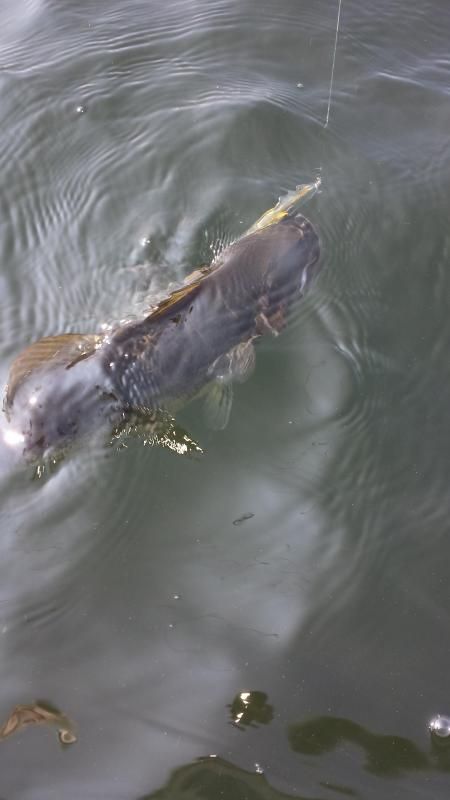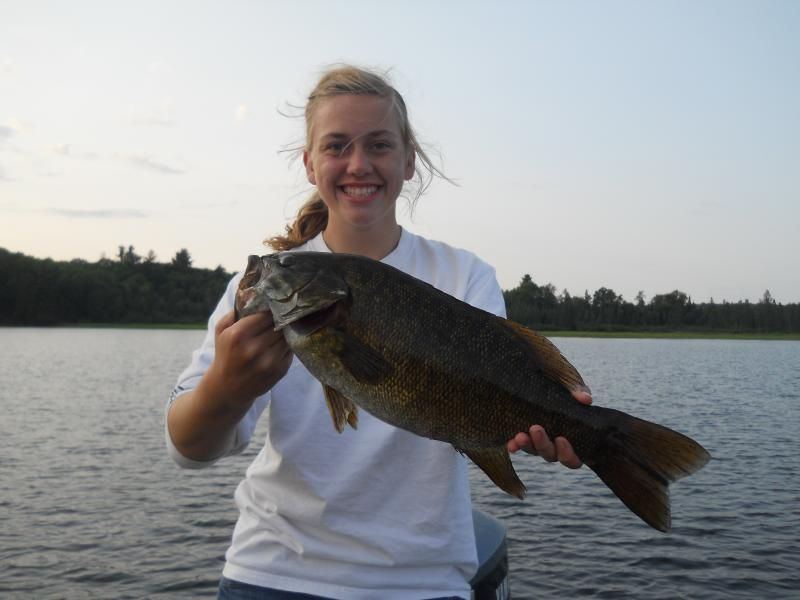The “Dog Days of Aug” as it is referred can be a magical time of year when you know where to look for that bone….. (“young of the year” bait ). Year after year I encounter many anglers looking for fish in all the wrong places in late summer. I wanted to write up a couple recent reports and had to stop and think about the significance of where I was beginning to catch my fish. Too often, we get stuck searching out those places that were hot last week, 2 weeks or 3 weeks ago. Accept it, those spots are all but dead and it’s time to move on.
So instead of the typical I caught fish report, here is a simple run and gun method I follow for finding late summer/early fall walleyes and bass. Yes, I said bass and walleyes in the same sentence. Look for the key areas filled with this year’s new hatch of bass, gills, crappies, shiners, and more….. Sounds like a smorgasbord of food; it is and the fish are beginning to eat heavily on the new abundance of food.
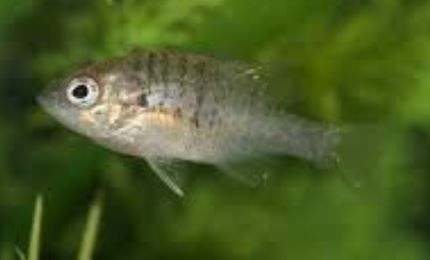
I fish two primarily different styles of lakes often, both shallow basin and deep basin lakes. Starting with shallow basins, I seek the most suitable habitat for YOY gills. Generally this is either dense weed mats tight on the shore OR rubble type rock making breaks and other structure away from the shoreline. These spots can vary and there is no doubt that it takes time on the water to crack a particular lake’s code. To minimize the search, I try to key in on spawning habitat as it relates to the type of habitat that I am now looking for.

Commonly, I find where bass had spawned at earlier this spring, there is quick access to deeper water, quick access to isolated patches of weeds, and some form of flats either weeds, muck, sand. But lets’ back up to “quick access to isolated patches of weeds”. There, I have my first starting point- shallow isolated patches of weeds.
My next step is to identify a string of identical locations. Knowing there will be variables, I still plot a run of locations that will have the most similar habitat. A key in this is to understand what subtle differences there are at each of these spots and make a mental note.
In addition to this, I next key in on small rock. It may be a natural granite rock pile, stone retaining walls, a rocky drop off, scattered rocky flat and add that to my plotted coarse.
My day is nearly set, and I have my milk run to make. Now it’s time to focus in on the presentation. I know the fish will be feeding on small baits – VERY SMALL. I have proven this to myself many times over – Big fish will eat little baits when it represents the food source they are pursuing. It is a constant struggle for me to continue to down size, but when bass or eyes are inhaling a 1” bluegill, that 2-1/2“ lipless bait starts looking really big. So my arsenal begins to shape up like this:
• 7’ Ml or Med fast Quantum Smoke with 20# braid.
• Koppers Live Target Baitball
• Smallest size lipless Gizzard Shad
• Lipless Bluegill
• Lipless Crappie
• Crank – smallest size Gizzard Shad
• Rattlin’ Rapala size 04
• Smallest size Rainbow Smelt
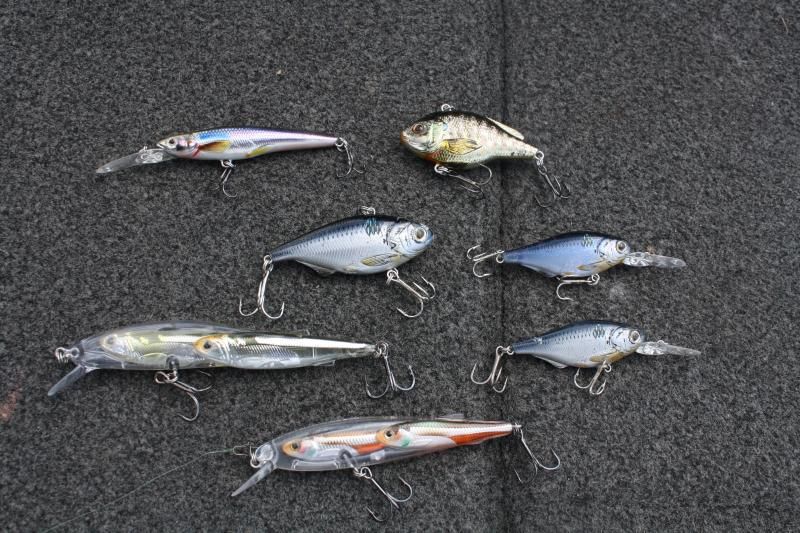
Now it’s a matter of run & gun each spot. My eyes are peeled for any activity which its common to see subtle boils against a shore or in the weeds. Patience is a virtue, but don’t waste time. Fan cast out the areas you know should have YOY bait in it. I work the nooks and crannies around weeds balls in 6” of water to 3 or 4 feet and cast again. I work a few baits and move on. Only after hitting multiple fish do I feel I’m on them. Even then, pay very close attention to the subtle details that made THAT spot hold fish and seek out identical cover. It can be weeds on a point, weeds between docks, change of weed type, or rocks on a point, and so on. Most often, you will see that same type of habitat will host the same type of bait, and the same predators patrolling it.
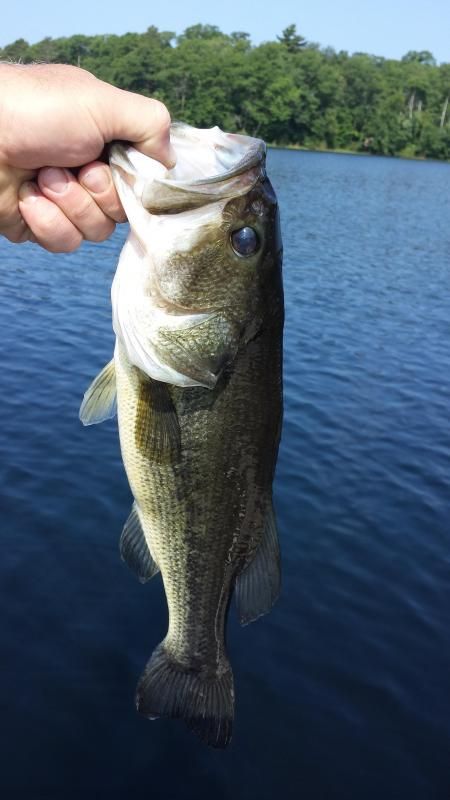
I add 3 other factors when I’m looking at deep basin lakes. Nearly all the same near shore habitat applies as a shallow basin. But now we add deeper rock piles, deep weeds, and suspended. Yea, it sounds complex and maybe intimidating but it doesn’t need to be. In todays’ age, the vast majority of us have good electronics and we need to put them to use.
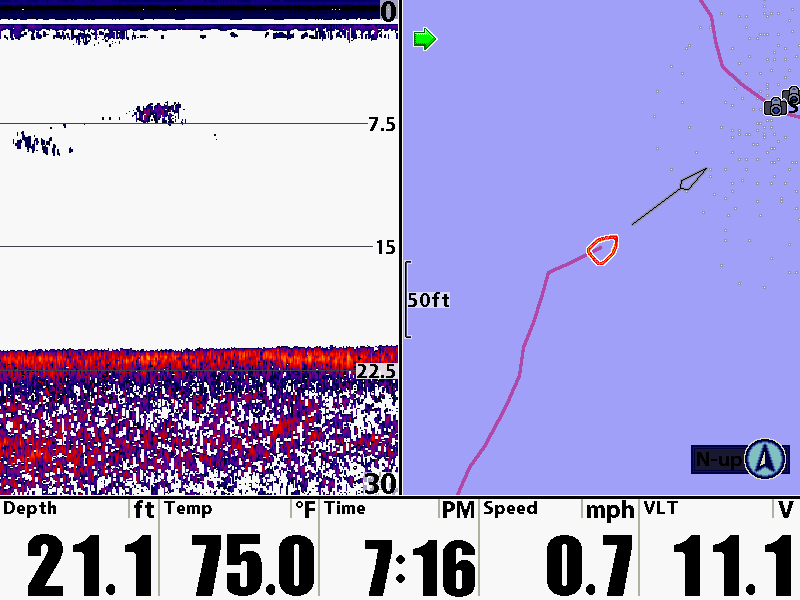
I cover most of the suspended action with 2 methods of search. Visual and drive-by. I’m no one’s fool and I’ll catch stupid fish all day long with a smile on my face. If fish are breeching bait off a point or out of a weed bed I’ll be on it like stink to a skunk. That’s the power of observation. But to cover more habitat I drive by and around all the points I can while I’m running and gunning my other spots. Knowing your electronics is key to knowing your speed limitations for a good signal return. For my rig, it’s about 30 mph so it makes a quick spot check in finding that needle in a haystack.

The same goes for deep weeds and structure. Know how fast you can scan without losing detail. Not every rock pile you pull up on or outer weed edge will be the spot the dog buried the bone, but checking multiple spots of the right habitat will get you there.
How do you target the walleyes Vs. Bass?
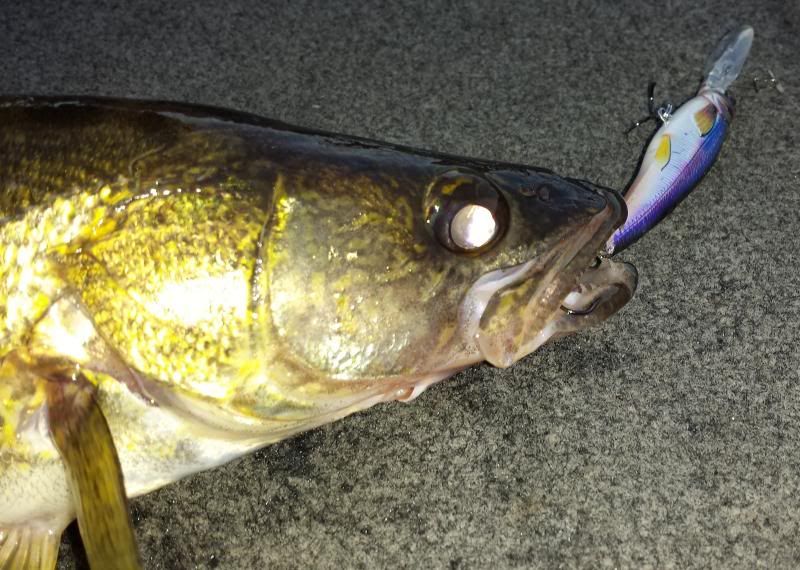
Depending on the conditions (daylight, weather, and so on) they can be together, bass during the day, walleyes at night, walleyes under the docks… just need to do some old fashion fishing and let them tell you what they are doing.
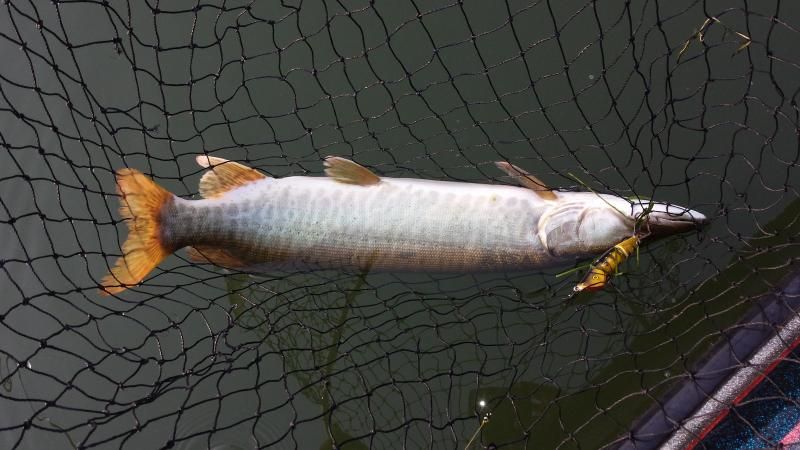
Wouldn’t be a report without a few top predators mixed in. So for the musky guys looking for a little more action, here is what I encounter. I’m not a huge musky hunter and I only get out about 20 to 30 times a year to target them. But when the walleyes move shallow or suspend for YOY bait, skies are never far behind. Seems like every year I have a few 18 to 24” walleyes tattered up by muskies and it gets me fired up to switch gears. So by following my same method on finding the walleyes this time of year, I know I’m in the same playpen as the skies. The proof was in the numbers this last trip out as we went 8 for 12 on the muskies that we raised. Unfortunately for me, we didn’t have the opportunity to stick any big girls this trip that we saw. But having up to 37”muskies blasting top water and bucktails just sub-surface is enough adrenaline to keep that heart pump’n just fine.
